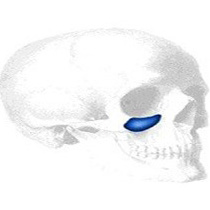A tear trough deformity is a deep indentation between the eye and the nose. Technically known as the nasojugal fold, this natural indentation becomes very noticeable if it gets too deep. Some people have tear troughs naturally, while others develop them with aging. Either way, it creates a dark shadow which is cosmetically distracting.
Treatment of the deep tear trough requires adding something between the skin and the underlying bone. Injectable fillers are one easy option which are safe although they are not permanent. The best choice for this area are injectable fillers made of hyaluronic acid or collagen because they flow in smoothly and less likely to be lumpy or irregular. Longer lasting fillers seem like a good idea but they are more prone to unevenness and potential lumpiness. The injections can easily be done in the office but there is a significant risk of bruising due to the large number of blood vessels in this area. I tell patients that about half the time, despite my best efforts, one side will get some bruising. While injectable fillers are quick and easy (at least for the doctor), in the long-term I don’t find them satisfying because it is just a temporary fix for the problem.
Injecting fat works similar to the synthetic injectable fillers from a conceptual standpoint. It can fill out the depression. Fat, however, requires a harvest site, a method for concentration, and must be done in a sterile manner to avoid infection. For these reasons, fat injections are not usually an office procedure. They might be an option if one was going to the operating room anyway for other procedures. Then this ‘natural’ injection method makes better economic sense. The thinness of the skin in the tear trough area is extremely thin, however, so any irregularities from the injected fat may be seen also. The biggest issue with injected fat, however, is that it is unpredictable. No one can tell you how much or if any will survive long-term.

Dr. Barry Eppley
Indianapolis, Indiana


